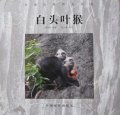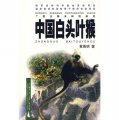Author: Hu Gang
Language: English
ISBN/ISSN: 9787030570796
Published on: 2018-06
Soft Cover
《黑叶猴生态行为研究 (英文版)》基于中国贵州东北部麻阳河自然保护区的5个黑叶猴种群六个月的前期调查、14个月的集中野外调查,系统研究分析了面对人类干扰和生态压力,黑叶猴(Trachypithecus francoisi)在取食、活动、时间分配、种群结构、社会行为和繁殖等方面的适应性。同时,收集婴猴行为发展和从出生开始的毛色变化的数据进行研究。
Contents
Preface
Chapter One Introduction 1
1.1 Evolutionary History and Adaptations of Colobine Monkey
1.1.1 Evolutionary history of colobine monkeys 1
1.1.2 Adaptations of colobine monkeys 3
1.2 Classification of Asian Colobines 5
1.2.1 Brief review 5
1.2.2 Classification of Asian langur species 6
1.2.3 Classification of the francoisi group 7
1.3 Distribution of Asian Colobines 8
1.3.1 Brief review 8
1.3.2 Distribution of Trachypithecus species 10
1.3.3 Distribution of the limestone langurs 11
1.3.4 Distribution of T. francoisi 11
1.4 Ecological Studies of Trachypithecus Species 12
1.4.1 Ecological studies of the T. vetulus group 12
1.4.2 Ecological studies of the T. cristatus group 13
1.4.3 Ecological studies of the T. obscurus group 13
1.4.4 Ecological studies of the T. pileatus group 14
1.4.5 Ecological studies of the T. francoisi group15
1.5 Studies on Primate Behavioural Constraints 16
1.6 Conservation Issues 19
1.6.1 Brief review 19
1.6.2 Conservation of“limestone langurs” 20
1.7 Purpose of This book 21
Chapter Two Study Area and Methods 23
2.1 Location of MNR and Human Pressure 23
2.1.1 MNR in general 23
2.1.2 Main study area 24
2.2 Climate and Vegetation Characteristic at MNR 25
2.2.1 Climate Characteristic 25
2.2.2 Vegetation 26
2.3 The Study Langur Groups 26
2.4 Methods 28
2.4.1 Climate 28
2.4.2 Methods on vegetation and phenology 28
2.4.3 Methods on behavioral data 31
2.4.4 Ranging behavior38
2.4.5 Data on local community 38
Chapter Three Climatic, Phenological Patterns, and Conservation 39
3.1 Climate and Seasonality 39
3.1.1 Temperature 39
3.1.2 Rainfall39
3.2 Plant Species Richness and Vegetation Composition 41
3.2.1 Species richness in the main study area41
3.2.2 Comparison between LYY and XGB43
3.3 Phenology of Food Species 45
3.3.1 Food species 45
3.3.2 Phenological pattern 46
3.4 Human Pressure in the Main Study Area 48
3.5 Discussion 49
3.5.1 Species richness and dominance 49
3.5.2 Seasonal variations of climate and phenological pattern 50
3.5.3 Human disturbance and its consequence for the langurs 53
3.6 Summary 55
Chapter Four Feeding Ecology 56
4.1 Introduction 56
4.2 Method Review 61
4.2.1 Data recording in the field 61
4.2.2 Data analysis 61
4.3 Results 63
4.3.1 Food species 63
4.3.2 Food items 70
4.3.3 Habitat effects on diet 76
4.3.4 Crop raiding 83
4.3.5 Rock lapping 84
4.3.6 Water drinking 85
4.4 Discussion 86
4.5 Summary 93
Chapter Five Range Use and Territoriality 95
5.1 Introduction 95
5.2 Review of field processes 100
5.3 Results 102
5.3.1 DTD 102
5.3.2 Home range 105
5.3.3 Range overlap and territoriality 111
5.3.4 Group leadership 115
5.3.5 Choice of sleeping site 117
5.4 Discussion 122
5.4.1 Daily travel distance 122
5.4.2 Range size 124
5.4.3 Range overlap & territoriality 125
5.4.4 Group leading 126
5.4.5 Choice of sleeping site 126
5.5 Summary 128
Chapter Six Activity Pattern and Time Budget 130
6.1 Introduction 130
6.2 Methods 134
6.2.1 Techniques review 134
6.2.2 Field procedure 136
6.2.3 Data pool and analysis 136
6.3 Results 137
6.3.1 Daily activity pattern 137
6.3.2 General time budget pattern and seasonal change 139
6.3.3 Habitat effects on time budget 144
6.3.4 Sex-age class differences 147
6.4 Discussion 149
6.4.1 Daily activity pattern 149
6.4.2 General time budget pattern and seasonal change 150
6.4.3 Habitat effect on time budget 152
6.4.4 Sex-age class differences 153
6.5 Summary 154
Chapter Seven Group Structure and Social Behavior 156
7.1 Introduction 156
7.1.1 Social organization 156
7.1.2 Dispersal 158
7.1.3 Group size 159
7.1.4 Sexual behavior, birth season and birth interval 160
7.1.5 Group takeover and infanticide 162
7.1.6 Social behavior 164
7.2 Methods 165
7.3 Results 166
7.3.1 Dynamic of target groups 166
7.3.2 Social structure and individual dispersal 168
7.3.3 Sexual behavior and birth 168
7.3.4 Group takeover and infanticide 172
7.3.5 Social behaviors 175
7.4 Discussion 176
7.4.1 Social structure and individual dispersal 176
7.4.2 Sexual behavior, breeding season and birth interval 179
7.4.3 Group takeover and infanticide 180
7.4.4 Social behavior 182
7.5 Summary 182
Chapter Eight Infant Behavioral Development and Pelage Coloration Change 184
8.1 Introduction 184
8.1.1 Dependent to independent feeding 184
8.1.2 Dependent to independent locomotion 185
8.1.3 Mother-infant physical proximity to socialization & allomothering 186
8.1.4 Coloration of natal pelage 187
8.2 Methods 189
8.3 Results 190
8.3.1 Dependent to independent feeding 190
8.3.2 Dependent to independent locomotion 192
8.3.3 Mother-infant physical proximity to socialization &am








